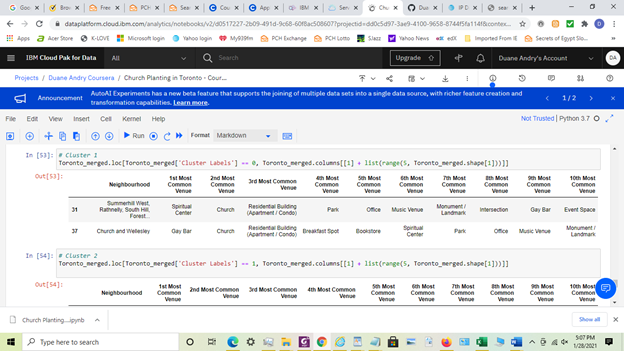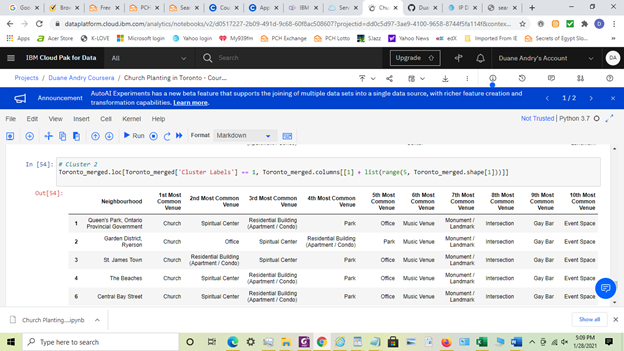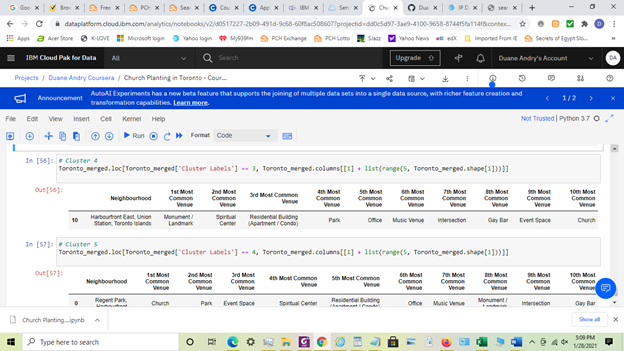The Bible Exploration
Basis: The Authorized King James Version
In this place, we are committed to enhancing your meditation of the Scripture. This will be done in several diverse ways.
- The first way is by the emphasis placed within certain portions of Scripture, using text enhancement (underline and italics, for instance).
- Another of the ways is by adding spacing in the verses of the Bible, to persuade you to proceed in a more contemplative fashion.
- Additionally, we have added certain items of thought and questioning that are intended to stimulate your own communion with the Spirit–as you review the inspiration that has been presented to you.
Herein is a look at a journey in which I participated in the Scripture of the God of Abraham, Isaac and Jacob; within Jesus Christ; as accompanied by the Comforter.
In all, our intent is to be true to the following Scripture.
2 Timothy 2:14-16:
Of these things put them in remembrance, charging them before the Lord that they strive not about words to no profit, but to the subverting of the hearers. Study to show thyself approved unto God, a workman that needeth not to be ashamed, rightly dividing the word of truth. But shun profane and vain babblings: for they will increase unto more ungodliness.
Within, in the journey, it moved forward in the following framework for anointed living . . .
1 Timothy 4:11-16:
These things command and teach.
Let no man despise thy youth; but be thou an example of the believers, in word, in conversation, in charity, in spirit, in faith, in purity. Till I come, give attendance to reading, to exhortation, to doctrine. Neglect not the gift that is in thee, which was given thee by prophecy, with the laying on of the hands of the presbytery. Meditate upon these things; give thyself wholly to them; that thy profiting may appear to all.
Take heed unto thyself, and unto the doctrine;
continue in them:
for in doing this thou shalt both save thyself, and them that hear thee.
And, too, as moving forward from that position . . . the following stages of age are the life overlay that is applied . . .
Joel 2:28-29:
And it shall come to pass afterward, that I will pour out my spirit upon all flesh;
and your sons and your daughters shall prophesy, your old men shall dream dreams,
your young men shall see visions: And also upon the servants and upon the handmaids in those days will I pour out my spirit.
Please feel free to share this journey . . . such as you may feel led to do so. We begin at the Beginning, with the following links. (Please note that, additional chapters and links will be added to the appropriate stream of conversation, in this, the journey through Scripture.)
<Week 46>
<Monday: 1 Samuel 21: Then came David . . . >
<Tuesday: 1 Samuel 22: David therefore departed . . . >
<Wednesday: 1 Samuel 23: Then they told . . . >
<Thursday: 1 Samuel 24: And it came . . . >
<Friday: 1 Samuel 25: And Samuel died; . . . >
<Saturday: 1 Samuel 26: And the Ziphites . . . >
<LifeLearningSeries.org>
Hebrews 6:1-3:
Therefore leaving the principles of the doctrine of Christ, let us go on unto perfection; not laying again the foundation of repentance from dead works, and of faith toward God, Of the doctrine of baptisms, and of laying on of hands, and of resurrection of the dead, and of eternal judgment.
And this will we do, if God permit.
=+=+=+=+=+=+=+=+=+=+=+=+=+=+=+=+=+=+=+=+=+=+=+=+=
=============================================
#Associated Entries in the Series
<Week 1: Introductory Statement
Book 01 – Genesis
<Week 2: Genesis 1: In the beginning . . .
Genesis 2: Thus the heavens . . .
Genesis 3: Now the serpent . . .
Genesis 4: And Adam knew . . .
Genesis 5: This is the . . .
Genesis 6: And it came . . .
<Week 3: Genesis 7: And the LORD . . .
Genesis 8: And God remembered . . .
Genesis 9: And God blessed . . .>
Genesis 10: Now these are . . .
Genesis 11: And the whole . . .
Genesis 12: Now the LORD . . .
<Week 4: Genesis 13: And Abram went . . .
Genesis 14: And it came . . .
Genesis 15: After these things . . .
Genesis 16: Now Sarai Abram’s . . .
Genesis 17: And when Abram . . .
Genesis 18: And the LORD . . .
<Week 5: Genesis 19: And there came . . .
Genesis 20: And Abraham journeyed . . .
Genesis 21: And the LORD . . .
Genesis 22: And it came . . .
Genesis 23: And Sarah was . . .
Genesis 24: And Abraham was . . .
<Week 6: Genesis 25: Then again Abraham . . .
Genesis 26: And there was . . .
Genesis 27: And it came . . .
Genesis 28: And Isaac called . . .
Genesis 29: Then Jacob went . . .
Genesis 30: And when Rachel . . .
<Week 7: Genesis 31: And he heard . . .
Genesis 32: And Jacob went . . .
Genesis 33: And Jacob lifted . . .
Genesis 34: And Dinah the . . .
Genesis 35: And God said . . .
Genesis 36: Now these are . . .
<Week 8: Genesis 37: And Jacob dwelt . . .
Genesis 38: And it came . . .
Genesis 39: And Joseph was . . .
Genesis 40: And it came . . .
Genesis 41: And it came . . .
Genesis 42: Now when Jacob . . . >
<Week 9: Genesis 43: And the famine . . .
Genesis 44: And he commanded . . .
Genesis 45: Then Joseph could . . .
Genesis 46: And Israel took . . .
Genesis 47: Then Joseph came . . .
Genesis 48: Then Joseph came . . .
<Week 10: Genesis 49: And Jacob called . . .
Genesis 50: And Joseph fell . . .
Genesis: Appendix: Partial Eulogy for . . .
Book 02 – Exodus
Exodus 1: Now these are . . .
Exodus 2: And there went . . .
“: . . . genealogy . . .
Exodus 3: Now Moses kept . . .
<Week 11: Exodus 4: And Moses answered . . .
Exodus 5: And afterward Moses . . .
Exodus 6: Then the LORD . . .
Exodus 7: And the LORD . . .
Exodus 8: And the LORD . . .
Exodus 9: Then the LORD . . .
<Week 12: Exodus 10: And the LORD . . .
Exodus 11: And the LORD . . .
Exodus 12: And the LORD . . . > < Addendum . . .
Exodus 13: And the LORD . . .
Exodus 14: And the LORD . . .
Exodus 15: Then sang Moses . . .
<Week 13: Exodus 16: And they took . . .
Exodus 17: And all the . . .
Exodus 18: When Jethro, the . . .
Exodus 19: In the third . . .
Exodus 20: And God spake . . .
Exodus 21: Now these are . . .
<Week 14: Exodus 22: If a man . . .
Exodus 23: Thou shalt not . . .
Exodus 24: And he said . . .
Exodus 25: And the LORD . . .
Exodus 26: Moreover thou shalt . . .
Exodus 27: And thou shalt . . .
<Week 15: Exodus 28: And take thou . . .
Exodus 29: And this is . . .
Exodus 30: And thou shalt . . .
Exodus 31: And the LORD . . .
Exodus 32: And when the . . .
Exodus 33: And the LORD . . .
<Week 16: Exodus 34: And the LORD . . .
Exodus 35: And Moses gathered . . .
Exodus 36: Then wrought Bezaleel . . .
Exodus 37: And Bezaleel made . . .
Exodus 38: And he made . . .
Exodus 39: And of the . . .
<Week 17: Exodus 40: And the LORD . . .
Book 03 – Leviticus
Leviticus 1: And the LORD . . .
Leviticus 2: And when any . . .
Leviticus 3: And if his . . .
Leviticus 4: And the LORD . . .
<Week 18: Leviticus 5: And if a . . .
Leviticus 6: And the LORD . . .
Leviticus 7: Likewise this is . . .
Leviticus 8: And the LORD . . .
Leviticus 9: And it came . . .
<Week 19: Leviticus 10: And Nadab and . . .
Leviticus 11: And the LORD . . .
Leviticus 12: And the LORD . . .
Leviticus 13: And the LORD . . .
Leviticus 14: And the LORD . . .
Leviticus 15: And the LORD . . .
<Week 20: Leviticus 16: And the LORD . . .
Leviticus 17: And the LORD . . .
<Week 21: Leviticus 18: And the LORD . . .
Leviticus 19: And the LORD . . .
Leviticus 20: And the LORD . . .
Leviticus 21: And the LORD . . .
Leviticus 22: And the LORD . . .
<Week 22: Leviticus 23: And the LORD . . .
Leviticus 24: And the LORD . . .
Leviticus 25: And the LORD . . .
Leviticus 26: Ye shall make . . .
Leviticus 27: And the LORD . . .
Book 04 – Numbers
Numbers 1: And the LORD . . .
<Week 23: Numbers 2: And the LORD . . .
Numbers 3: These also are . . .
Numbers 4: And the LORD . . .
Numbers 5: And the LORD . . .
Numbers 6: And the LORD . . .
Numbers 7: And it came . . .
<Week 24: Numbers 8: And the LORD . . .
Numbers 9: And the LORD . . .
Numbers 10: And the LORD . . .
Numbers 11: And when the . . .
Numbers 12: And Miriam and . . .
Numbers 13: And the LORD . . .
<Week 25: Numbers 14: And all the . . .
Numbers 15: And the LORD . . .
Numbers 16: Now Korah, the. . .
Numbers 17: And the LORD . . .
Numbers 18: And the LORD . . .
Numbers 19: And the LORD . . .
<Week 26: Numbers 20: Then came the . . .
Numbers 21: And when king . . .
Numbers 22: And the children . . .
Numbers 23: And Balaam said . . .
Numbers 24: And when Balaam . . .
Numbers 25: And Israel abode . . .
<Week 27: Numbers 26: And it came . . .
Numbers 27: Then came the . . .
Numbers 28: And the LORD . . .
Numbers 29: And in the . . .
Numbers 30: And Moses spake . . .
Numbers 31: And the LORD . . .
<Week 28: Numbers 32: Now the children . . .
Numbers 33: These are the . . .
Numbers 34: And the LORD . . .
Numbers 35: And the LORD . . .
Numbers 36: And the chief . . .
Book 05 – Deuteronomy
Deuteronomy 1: These be the . . .
<Week 29: Deuteronomy 2: Then we turned, . . .
Deuteronomy 3: Then we turned, . . .
Deuteronomy 4: Now therefore hearken, . . .
Deuteronomy 5: And Moses called . . .
Deuteronomy 6: Now these are . . .
Deuteronomy 7: When the LORD . . .
<Week 30>
Deuteronomy 8: All the commandments . . .
Deuteronomy 9: Hear, O Israel: . . .
Deuteronomy 10: At that time . . .
Deuteronomy 11: Therefore thou shalt . . .
Deuteronomy 12: These are the . . .
Deuteronomy 13: If there arise . . .
<Week 31>
Deuteronomy 14: Ye are the . . .
Deuteronomy 15: At the end . . .
Deuteronomy 16: Observe the month . . .
Deuteronomy 17: Thou shalt not . . .
Deuteronomy 18: The priests the . . .
Deuteronomy 19: When the LORD . . .
<Week 32>
Deuteronomy 20 : When thou goest . . .
Deuteronomy 21 : If one be . . .
Deuteronomy 22 : Thou shalt not . . .
Deuteronomy 23 : He that is . . .
Deuteronomy 24 : When a man . . .
Deuteronomy 25 : If there be . . .
<Week 33>
Deuteronomy 26: And it shall . . .
Deuteronomy 27: And Moses with . . .
Deuteronomy 28: And it shall . . .
Deuteronomy 29: These are the . . .
Deuteronomy 30: And it shall . . .
Deuteronomy 31: And Moses went . . .
<Week 34>
Deuteronomy 32: Give ear, O . . .
Deuteronomy 33: And this is . . .
Deuteronomy 34: And Moses went . . .
Book 06 – Joshua
Joshua 1: Now after the . . .
Joshua 2: And Joshua the . . .
Joshua 3: And Joshua rose . . .
<Week 35>
Joshua 4: And it came . . .
Joshua 5: And it came . . .
Joshua 6: Now Jericho was . . .
Joshua 7: But the children . . .
Joshua 8: And the LORD . . .
Joshua 9: And it came . . .
<Week 36>
Joshua 10: Now it came . . .
Joshua 11: And it came . . .
Joshua 12: Now these are . . .
Joshua 13: Now Joshua was . . .
Joshua 14: And these are . . .
Joshua 15: This then was . . .
<Week 37>
Joshua 16: And the lot . . .
Joshua 17: There was also . . .
Joshua 18: And the whole . . .
Joshua 19: And the second . . .
Joshua 20: The LORD also . . .
Joshua 21: Then came near . . .
<Week 38>
Joshua 22: Then Joshua called . . .
Joshua 23: And it came . . .
Joshua 24: And Joshua gathered . . .
BOOK 07 – The book of Judges
Judges 1: Now after the . . .
Judges 2: And an angel . . .
Judges 3: Now these are . . .
<Week 39>
Judges 4: And the children . . .
Judges 5: Then sang Deborah . . .
Judges 6: And the children . . .
Judges 7: Then Jerubbaal, who . . .
Judges 8: And the men . . .
Judges 9: And Abimelech the . . .
<Week 40>
Judges 10: And after Abimelech . . .
Judges 11: Now Jephthah the . . .
Judges 12: And the men . . .
Judges 13: And the children . . .
Judges 14: And Samson went . . .
Judges 15: But it came . . .
<Week 41>
Judges 16: Then went Samson . . .
Judges 17: And there was . . .
Judges 18: In those days . . .
Judges 19: And it came . . .
Judges 20: Then all the . . .
Judges 21: Now the men . . .
<Week 42>
BOOK 08 – The book of Ruth
Ruth 1: Now it came . . .
Ruth 2: And Naomi had . . .
Ruth 3: Then Naomi her . . .
Ruth 4: Then went Boaz . . .
BOOK 09 – The first book of Samuel otherwise called the first book of the kings
1 Samuel 1: Now there was . . .
1 Samuel 2: And Hannah prayed, . . .
<Week 43>
1 Samuel 3: And the child . . .
1 Samuel 4: And the word . . .
1 Samuel 5: And the Philistines . . .
1 Samuel 6: And the ark . . .
1 Samuel 7: And the men . . .
1 Samuel 8: And it came . . .
<Week 44>
1 Samuel 9: Now there was . . .
1 Samuel 10: Then Samuel took . . .
1 Samuel 11: Then Nahash the . . .
1 Samuel 12: And Samuel said . . .
1 Samuel 13: Saul reigned one . . .
1 Samuel 14: Now it came . . .
<Week 45>
1 Samuel 15: Samuel also said . . .
1 Samuel 16: And the LORD . . .
1 Samuel 17: Now the Philistines . . .
1 Samuel 18: And it came . . .
1 Samuel 19: And Saul spake . . .
1 Samuel 20: And David fled . . . > .
=+=+=+=+=+=+=+=+=+=+=+=+=+=+=+=+=+=+=+=+=+=+=+=+=
=============================================
Life Learning Series
=+=+=+=+=+=+=+=+=+=+=+=+=+=+=+=+=+=+=+=+=+=+=+=+=
=============================================









